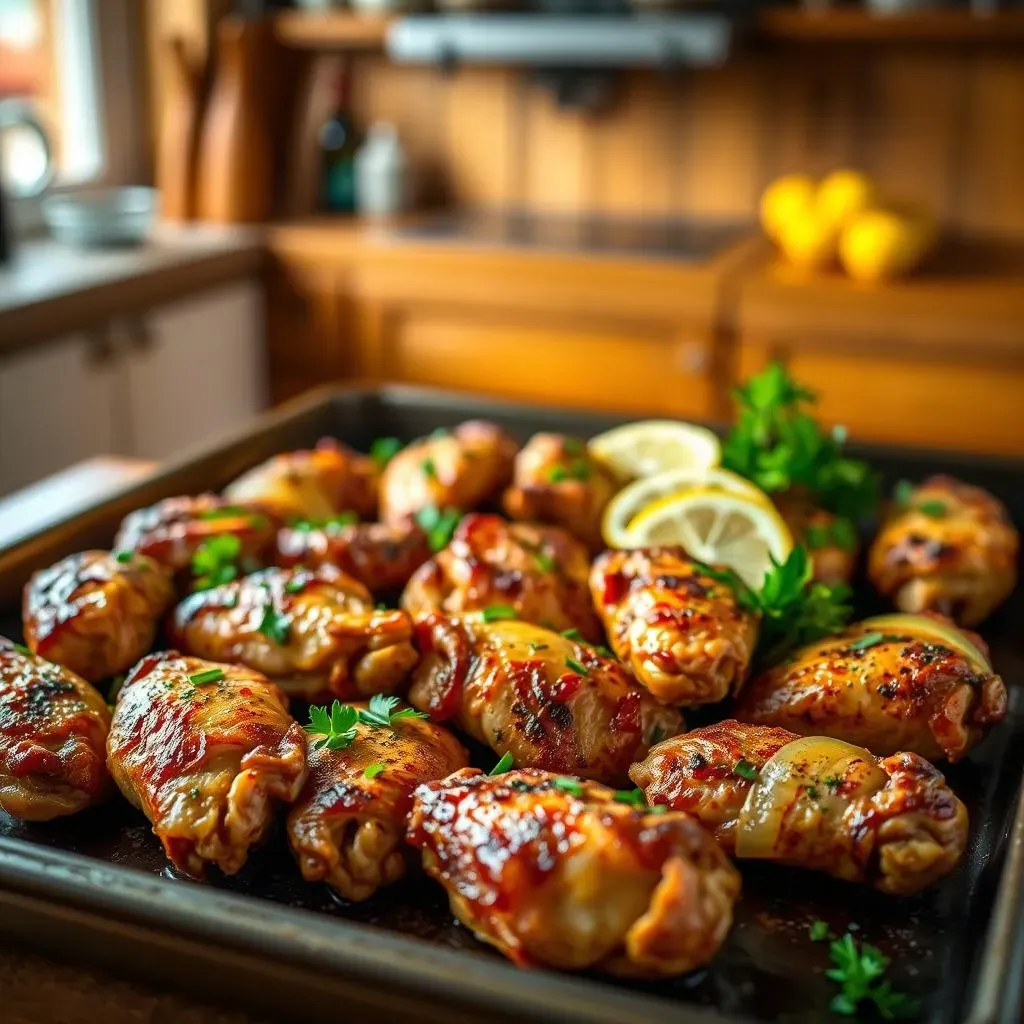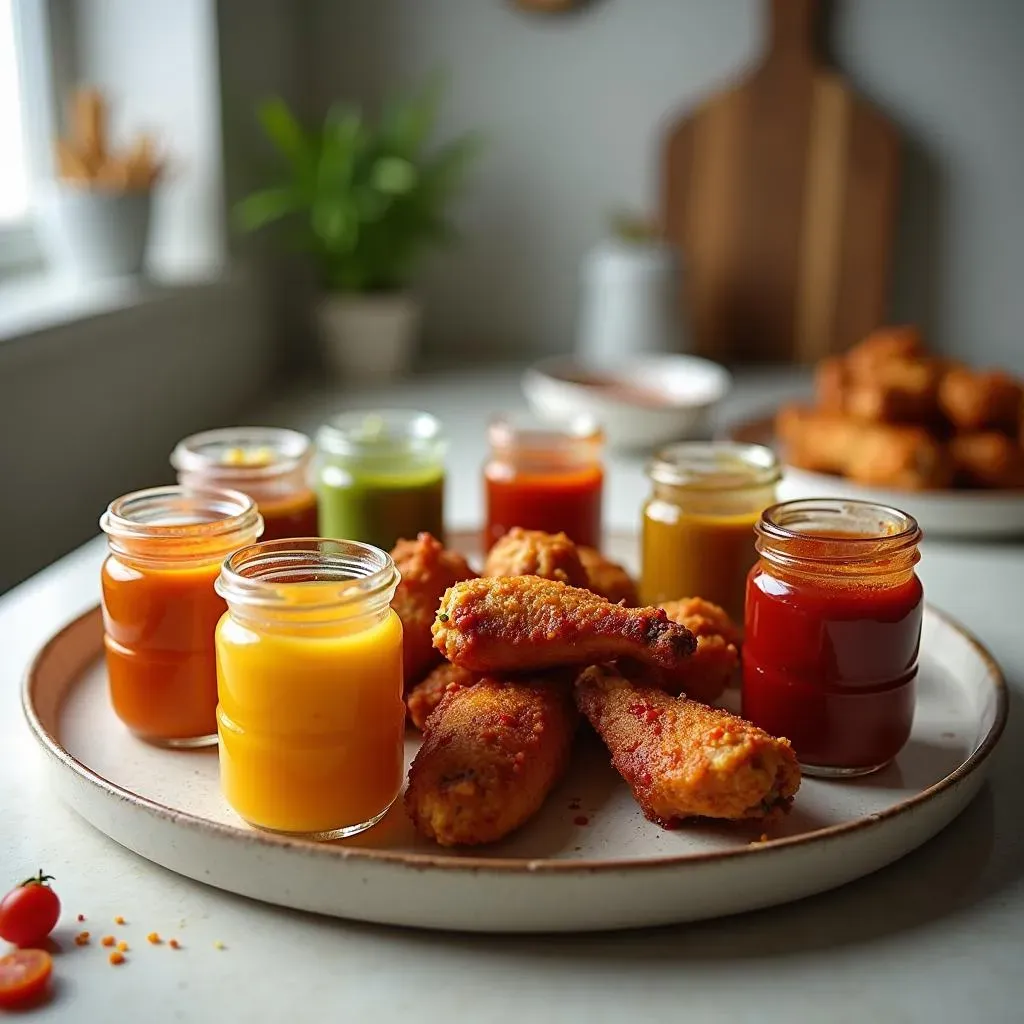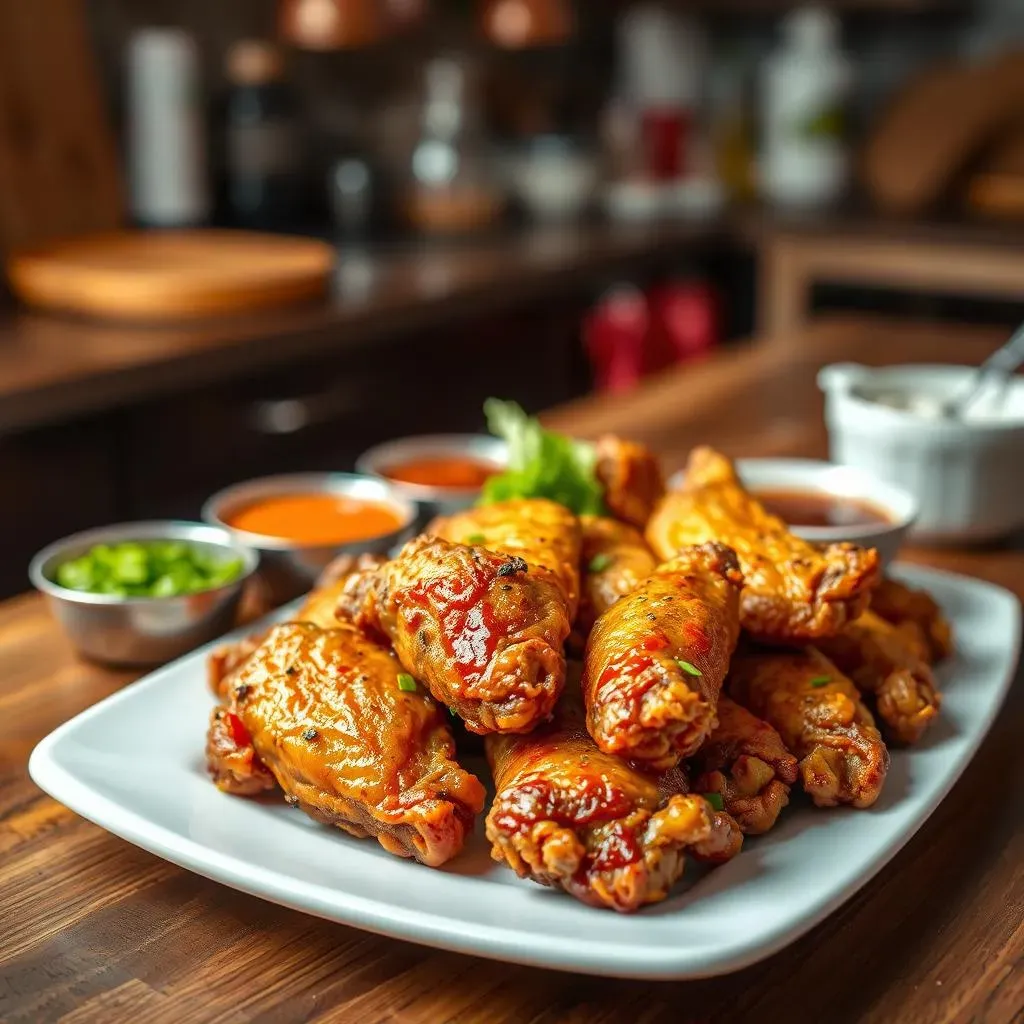Table of Contents
Let's face it: chicken wings are amazing. But those deep-fried, sauce-drenched versions? Not so amazing for your waistline. That's where this guide comes in! We're diving headfirst into the world of healthy chicken wing recipes, proving that you can indulge in this classic comfort food without the guilt. Forget greasy takeout; we'll show you how to bake, season, and sauce your wings to crispy, juicy perfection, all while keeping them surprisingly healthy. This isn't about bland, boring alternatives; we're talking flavor explosions! We'll explore various baking techniques to achieve that perfect crunch, unlock a treasure trove of creative seasoning and sauce ideas (think beyond buffalo!), and share expert tips to guarantee the crispiest, juiciest wings you've ever tasted. Get ready to revolutionize your game day snacking and discover the joy of healthy chicken wing recipes – it's easier than you think! Prepare to be amazed by how delicious healthy eating can be. Let's get started!
Flavorful & Healthy Baking Techniques

Flavorful & Healthy Baking Techniques
Prep Like a Pro: The Foundation for Flavor
First things first: Proper preparation is key to achieving those amazing, crispy-skinned, juicy chicken wings. Start by patting your wings completely dry with paper towels. This helps them crisp up beautifully in the oven. Then, toss them in a bowl with your favorite dry rub – we’ll get to some exciting flavor combinations later! Don't be shy with the seasoning; really coat those wings. Remember, the more surface area you expose to the heat, the crispier they’ll get. For extra flavor, consider marinating your wings for a few hours or even overnight in a simple mixture of olive oil, lemon juice, and your chosen herbs and spices.
Once you've seasoned your wings, let them sit at room temperature for about 30 minutes. This allows the flavors to meld and penetrate the meat, resulting in a more intense taste experience. Trust me, this small step makes a big difference! You can also try different methods of cooking chicken, like grilling or slow cooking, to see what works best for you. Experiment!
Step | Action | Tip |
|---|---|---|
1 | Pat wings dry | Thoroughly dry for maximum crispiness |
2 | Season generously | Don't be afraid of the spices! |
3 | Rest at room temperature | 30 minutes for optimal flavor |
Baking to Perfection: Temperature and Time
Now, the baking process itself. Preheat your oven to 400°F (200°C). Arrange the wings in a single layer on a baking sheet lined with parchment paper (this prevents sticking and makes cleanup a breeze!). Baking them in a single layer ensures even cooking and browning. Bake for about 40-45 minutes, flipping halfway through, until they're golden brown and cooked through. If you prefer extra crispy skin, reduce the oven temperature to 375°F (190°C) and bake for an additional 30-60 minutes, again flipping halfway through. The lower temperature allows for gradual crisping without drying out the meat.
A meat thermometer is your best friend here! Make sure the internal temperature of the thickest part of the wing reaches 165°F (74°C) to ensure they're fully cooked and safe to eat. Don't rush this part; undercooked chicken is a no-no. If you're looking for other healthy chicken options, you might find some inspiration from our healthy chicken breast recipes.
- Preheat oven to 400°F (200°C)
- Arrange wings in a single layer
- Bake for 40-45 minutes, flipping halfway
- Check internal temperature (165°F/74°C)
Beyond the Basics: Experiment with Cooking Methods
While baking is a fantastic method for achieving healthy, crispy chicken wings, don't be afraid to experiment! An air fryer can produce incredibly crispy results in a shorter amount of time. Simply follow the same seasoning and preparation steps, then air fry at 400°F (200°C) for about 20-25 minutes, shaking the basket halfway through. For a different texture, try pan-frying your wings in a little olive oil over medium-high heat, achieving a nice sear while keeping the oil content minimal. Remember to check out our collection of healthy pan-fried chicken recipes for more ideas.
The beauty of cooking is in the experimentation. Don't be afraid to try different methods and see which one best suits your taste and equipment. Each technique offers a slightly different texture and flavor profile, allowing you to tailor your chicken wings to your preferences. The most important thing is to have fun and enjoy the process of creating your perfect healthy chicken wings! And remember, a perfectly cooked chicken wing is a thing of beauty.
Creative Seasoning & Sauce Ideas

Creative Seasoning & Sauce Ideas
Beyond Buffalo: Exploring Flavor Profiles
Let's ditch the predictable buffalo sauce and explore some exciting new flavor territories! Think sweet and spicy Korean BBQ wings, with a sticky glaze of gochujang paste, soy sauce, honey, and sesame oil. Or how about a zesty lemon-herb marinade, using fresh rosemary, thyme, lemon zest, and garlic? The possibilities are endless! Don't be afraid to experiment with different spice blends, herbs, and citrus fruits to create unique and delicious flavor combinations. For a richer flavor, try adding a touch of maple syrup or brown sugar to your dry rub.
Consider the global inspiration! Mediterranean flavors are also a great choice. Imagine a vibrant blend of oregano, lemon juice, garlic, and a sprinkle of feta cheese after baking. Or, for something a little different, try a smoky chipotle rub for a delicious kick. Remember, you can always adapt your favorite recipes from other dishes! For more inspiration, you might find some ideas in our collection of healthy baked chicken recipes. Get creative and have fun with it!
- Korean BBQ (gochujang, soy sauce, honey)
- Lemon Herb (rosemary, thyme, lemon zest)
- Mediterranean (oregano, lemon, garlic, feta)
- Smoky Chipotle
Homemade Sauces: A Flavor Adventure
Making your own sauces is incredibly rewarding and allows for complete control over ingredients and flavor profiles. A simple yet delicious option is a honey-garlic sauce, combining honey, soy sauce, minced garlic, and a touch of ginger. For a creamy alternative, try a Greek yogurt-based sauce, mixing plain Greek yogurt with dill, lemon juice, and a pinch of salt and pepper. This lighter option is a fantastic alternative to heavier, cream-based sauces.
Don't forget the power of fresh herbs! A vibrant cilantro-lime sauce is a refreshing change of pace, while a spicy peanut sauce (peanut butter, soy sauce, lime juice, sriracha) brings a bold Asian-inspired flavor. The key here is to experiment and find your own favorite combinations. You can adjust the sweetness, spiciness, and tanginess to suit your palate. For those who like a bit of everything, you can find some inspiration from our healthy chicken thigh recipes.
Sauce | Ingredients |
|---|---|
Honey-Garlic | Honey, soy sauce, garlic, ginger |
Greek Yogurt | Greek yogurt, dill, lemon juice, salt, pepper |
Cilantro-Lime | Cilantro, lime juice, salt, pepper |
Spicy Peanut | Peanut butter, soy sauce, lime juice, sriracha |
Low-Calorie, High-Flavor Combinations
Creating healthy chicken wing recipes doesn't mean sacrificing flavor! Focus on using lean protein, low-sodium ingredients, and natural sweeteners. Instead of heavy creams, opt for Greek yogurt or light sour cream to create creamy sauces. Use fresh herbs and spices to add depth and complexity without extra calories. Remember, a little bit of sweetness goes a long way, so start with a small amount of honey or maple syrup and adjust to your liking.
Consider incorporating vegetables into your sauces to add both nutrients and flavor. Finely chopped bell peppers, onions, or even a touch of pureed butternut squash can add depth and sweetness without adding significant calories. Think outside the box and experiment with different flavor profiles. Don't be afraid to try something new! For even more ideas, explore our healthy slow cooker chicken recipes - they're packed with flavor and surprisingly healthy too!
Tips for Making the Crispiest, Juiciest Wings

Tips for Making the Crispiest, Juiciest Wings
The Secret to Extra Crispy Skin
Want wings with skin so crispy it practically sings? The key is all about moisture control. We already talked about patting the wings dry, but let's take it a step further. After patting them dry, you can even let them sit in the refrigerator uncovered for a few hours. This allows any remaining moisture to evaporate, contributing to extra-crispy skin. Think of it as a pre-bake dehydrating process. You can also use a baking powder trick; sprinkle a little baking powder onto the wings before seasoning – it helps create a wonderfully crisp exterior. Don't worry, you won't taste the baking powder.
Another important factor is the oven rack placement. Avoid overcrowding the pan, and ensure your wings aren't sitting too close to the bottom of the oven. This allows for even air circulation, promoting even browning and crispiness. You might even consider using two baking sheets to give your wings ample room to breathe. If you're exploring other chicken recipes, check out our healthy chicken drumstick recipes for more cooking inspiration.
- Refrigerate uncovered for a few hours
- Use baking powder for extra crispiness
- Don't overcrowd the baking sheet
- Ensure good air circulation
Keeping it Juicy Inside
While we're aiming for crispy skin, we definitely don't want dry, flavorless meat. The trick here is to balance the high heat needed for crispiness with careful cooking time and monitoring. Using a meat thermometer is crucial to ensure that the internal temperature reaches a safe 165°F (74°C) without overcooking. Overcooking leads to dry meat, so it's best to err on the side of caution. Consider using a lower temperature for a longer cooking time, especially if you're aiming for extra-crispy skin. It's a slower process, but the results are well worth the wait.
Don't forget about brining! Soaking your chicken wings in a saltwater brine for a few hours before cooking helps retain moisture and adds flavor. A simple brine can be made with water, salt, and sugar. Experiment with herbs and spices to add extra flavor to your brine. You can also consider making your own dry rub for a more customized flavor. For some more ideas, take a look at our healthy grilled chicken recipes – they have some great flavor tips!
Tip | Description |
|---|---|
Use a meat thermometer | Ensure internal temperature reaches 165°F (74°C) |
Lower temperature, longer time | For extra crispy skin without drying out |
Brine before cooking | Retains moisture and adds flavor |